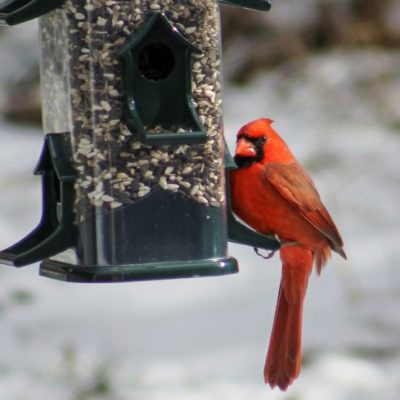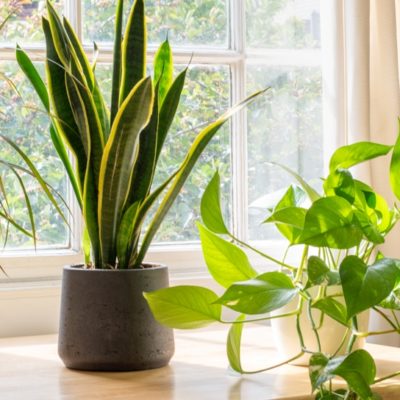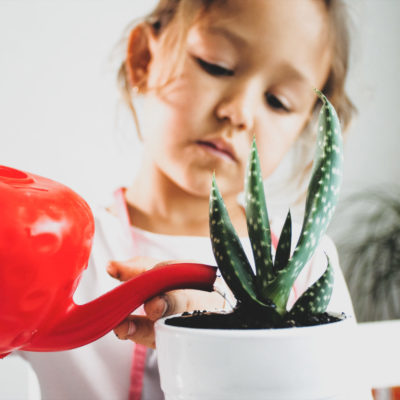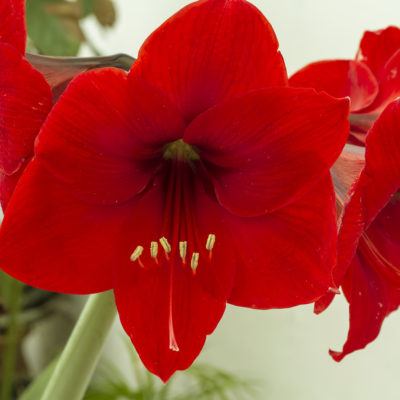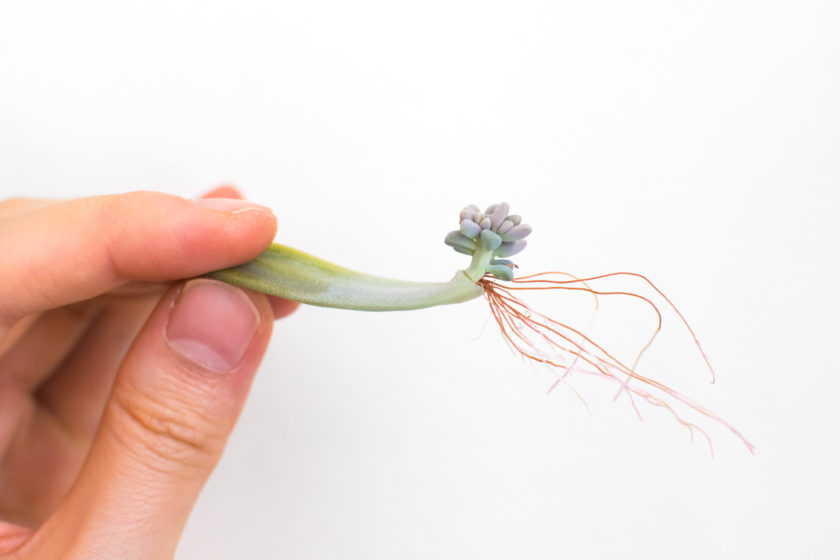
Propagating (and Reviving) Succulents
We are of the opinion that there is no such thing as having too many succulents, as you can clearly see from our Cactus & Succulent House. They’re adorable, they thrive on near-criminal neglect, and best of all they are ridiculously easy to propagate! All you need is a pair of sharp, clean scissors and some newspaper and your collection can expand beyond your wildest dreams!
Before you dive into the propagating steps below, here’s a helpful hint for most trailing succulents, especially the popular Burro’s Tail: Make sure your plant is DRY before cutting! We’re talking bone-dry, to the point of soil breaking away from the pot DRY. The plant is more likely to have a death-grip on its leaves in this state, which means you can end up with something more than just a bare stick.
- Depending on the variety of succulent, you’ll need to perform one of the these plant surgeries:
- For a leggy/stretched succulent or one featuring a main stem like Burro’s Tail, cut about an inch or two from the bottom. You may need to remove some of the bottom leaves from this new cutting to give yourself a decent stem to plant later.
- For squat varieties like Echeveria, cut or gently twist off a single leaf, ensuring that it comes cleanly from the stem. Leaves cut straight across their middle will not root.
- Varieties like Aloe, Agave, and Haworthia can’t be cut but they do produce ‘pups’ or mini-plants at their sides; these can be removed once they are big enough to grow their own root system.
- Lay your leaves/stem pieces in a single layer on either newspaper or paper towel. Keep your cutting collection in a bright but indirectly lit area until they develop a callus or hard scab at the cut site. This can take a few days or a few weeks, depending on the season and your home environment.
- Once the callus has formed, it’s planting time! Use a small container (with drainage!) that is filled with cactus soil, then pop in your cutting callus-side-down so that half to two-thirds of the cutting is above soil level. Pack the soil around your cutting to keep it secure and upright.
- Water your freshly planted babes thoroughly. Your cuttings will need regular watering while they develop their roots, a process that can take months so be prepared to be patient! Let them dry out slightly before giving them their next deep drink.
- Once they’ve got a good root system down you can move them back to their brightly lit area and start letting them dry out like their parents and older siblings.
- Keep in mind that not all propagating projects result in success, even if you follow every step correctly. Hopefully this isn’t the case, and your succulent collection can grow and thrive to one day take over the world.
Okay, all that’s great for those who have healthy succulents to choose from, but what if your plants are looking a little less than thriving? Many of the questions we receive from customers about their succulents revolve around their plants being too long or leggy and losing their vibrant colouring, what we call “stretched” (the technical term is etiolated). This typically happens when the plant doesn’t get 4-6 hours of direct light each day, but it could also be its age. Either way, it can be remedied by performing Surgery A from above, which can then allow the original plant to branch out from the incision site; if the plant is still bare below the cut, at least you’ll have the new cutting!
When it comes to succulent issues (and cacti, as well) the main culprit tends to be WATER. It is very easy to love your desert dwellers too much, but this leads to over-watering your pots which will then lead to them sitting in water and not drying out, which will send them down the path to root rot and eventual death. Sorry if that was overly dramatic, but that’s how it is. And the issue won’t go away by giving them lower quantities of water if you keep up the same frequency, since this just drowns the top layer of roots and starves the ones at the bottom. So what can you do?
Let them dry out; seriously, ignore them! If you think about their natural habitat, specifically how often it rains in the desert, succulents really only get a good drenching a few times a year. True, your household succulents are in small pots and not a giant desert landscape, but the general idea remains that they need to dry out very well before getting their next, deep drink that reaches all the way out the bottom of the pot. Remember that all plants slow down in fall and winter, so you’ll have to extend the amount of time between your waterings. And make sure that they’re getting as much direct sunlight as possible all year long; even in the low light of winter they still need sunlight!
If you’re still worried about your adorable pals, you can ease them out of their pot onto some newspaper and take a look at their roots. The white and juicy ones are healthy, but anything brown and slimy (or even brittle) isn’t doing your plant any good. You can remove the damaged roots and repot your plant in fresh cactus soil, but if more than half the roots are rotted all your efforts may be for not. Luckily, there are lots of sun-loving friends to choose from in Belgian’s Cactus & Succulent House!


